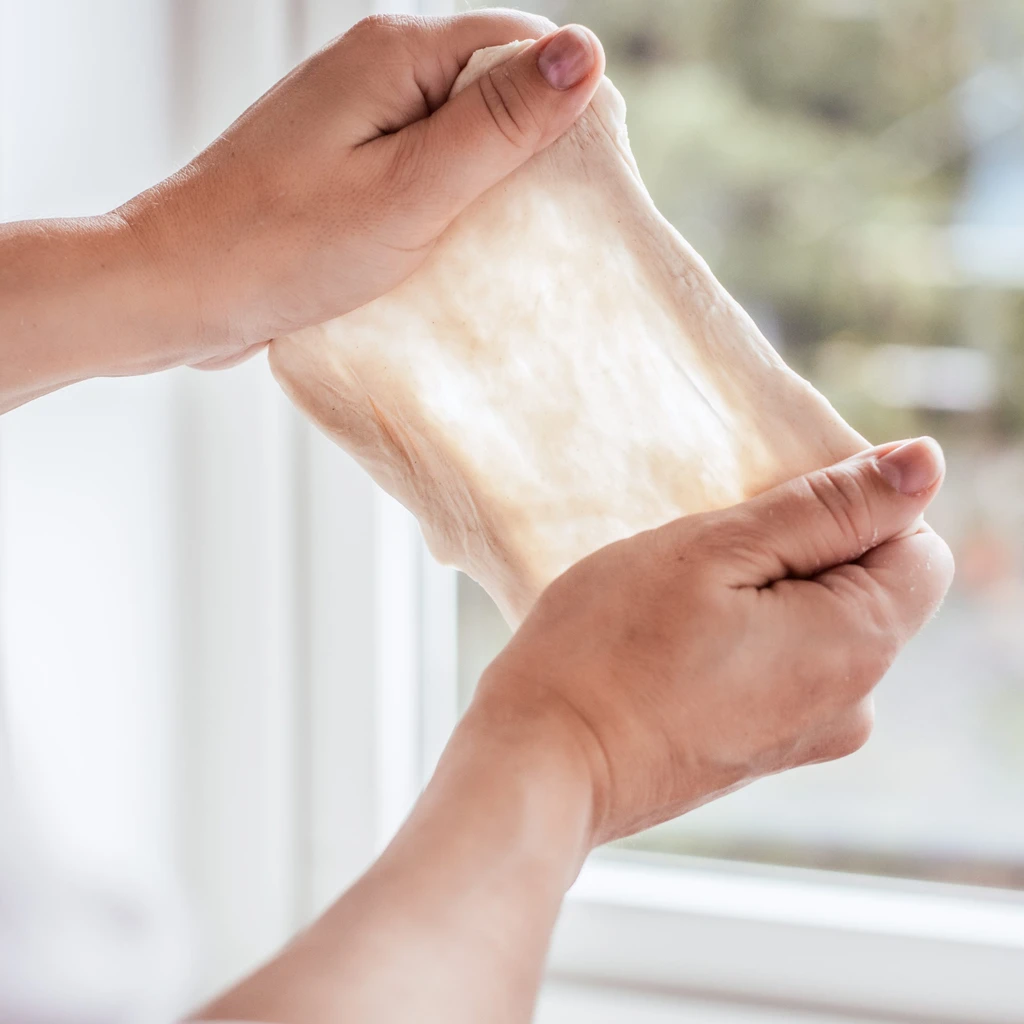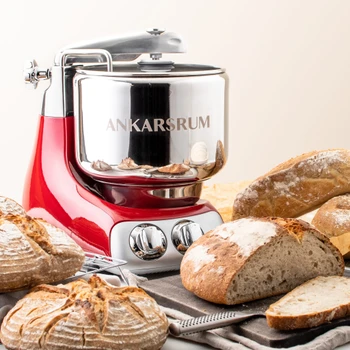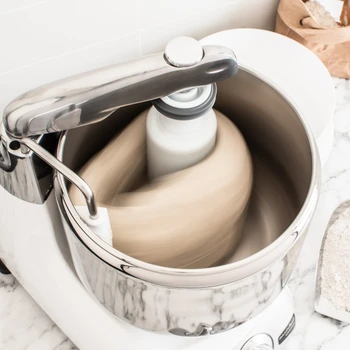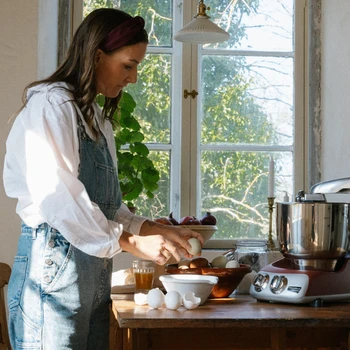How do you know if you’ve done enough kneading?
Bread recipes requires flour, liquid and a leavening agent. Flour contains, among other things, the protein gluten, which is one of the components that holds dough together and makes it elastic.
When dough is kneaded, the gluten forms a network of threads which, together with leavening agents, create small gas bubbles. These gas bubbles increase the volume of the dough and make the bread fluffy.
Gluten threads
As soon as flour comes in contact with liquid, the chemical process begins. The protein in the flour reacts with the liquid to form gluten threads. At first the threads are weak and can easily break, but kneading will strengthen the threads and make the dough elastic.
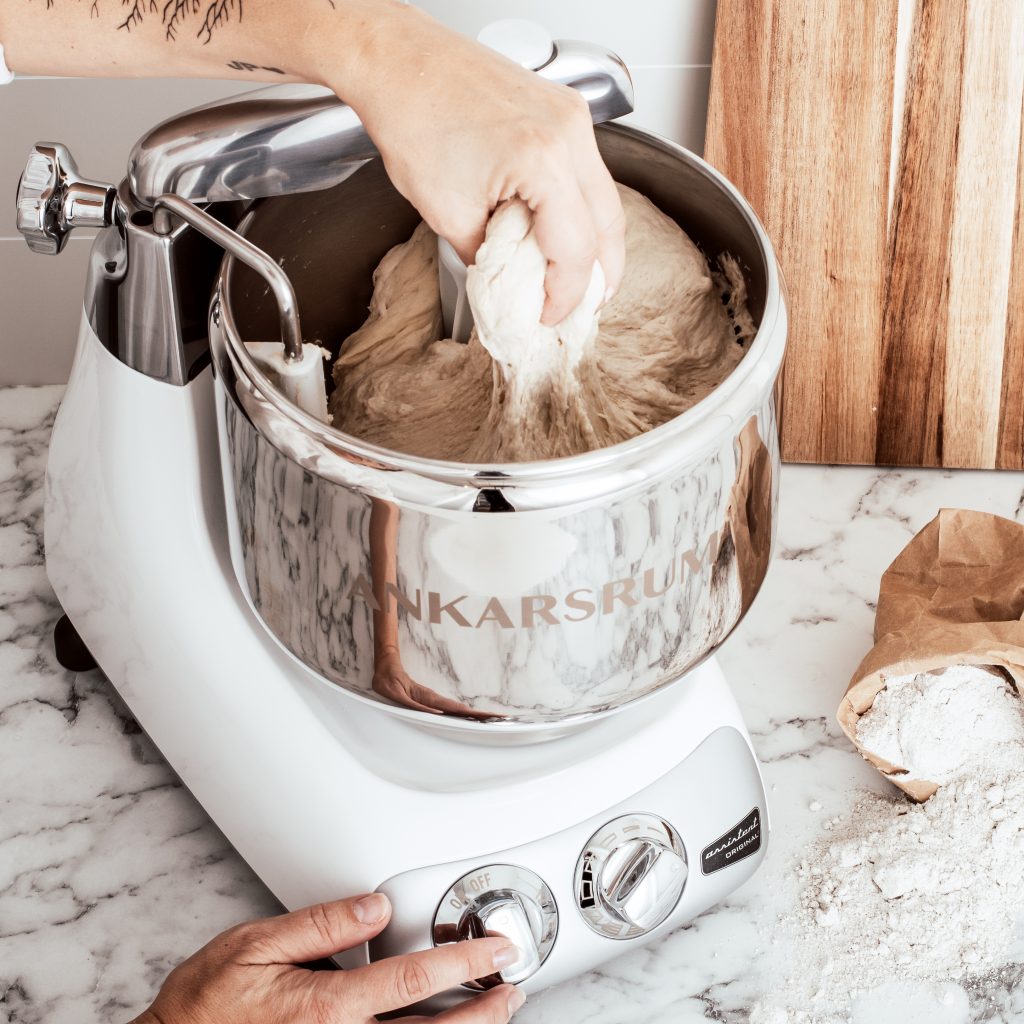
Gluten window / Windowpane Test
Here is a test that can determine if dough has the right elasticity and kneading is complete.
Take a small piece of dough and stretch it into a square with your hands. The dough should stick together and appear mostly transparent, like a window.
If the dough cracks, the gluten threads are too weak and more kneading is required. Knead the test piece of dough in your hand for a while and repeat the test. If you get a durable, transparent gluten window, it means that the dough in the bowl needs more kneading.
Gluten windows work best with pure wheat dough. For example, a mixed dough of rye and wheat will look slightly different. Test this dough after kneading, and if it holds and wants to contract again, it is ready.
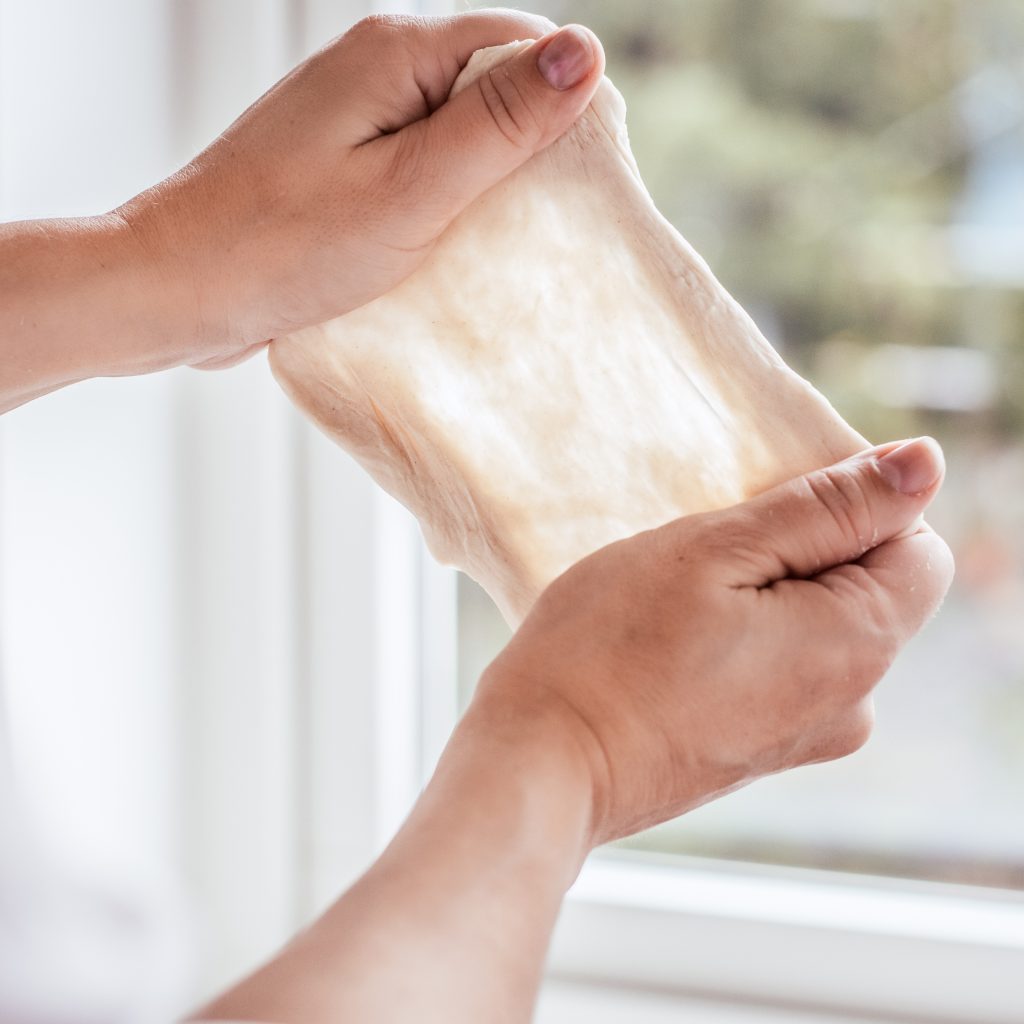
Overworked dough
Be careful not to overwork the dough, as this may cause the gluten threads to fall apart. If you have a nice gluten window, no more kneading is required or recommended.
